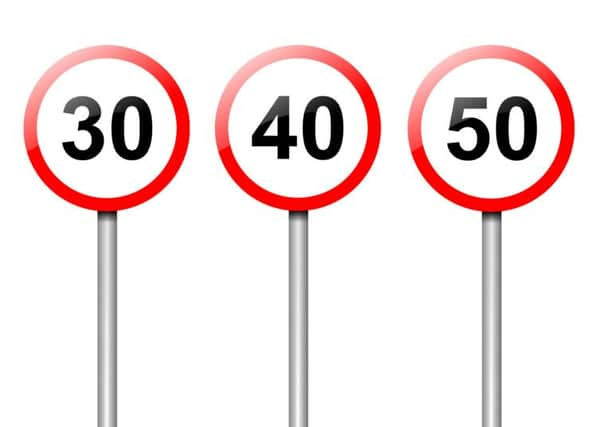Call to reduce rural road speeds


The charity is today urging the Government to reset the default speed limit down from 60mph, and has highlighted a one per cent year-on-year rise in the number of people killed on roads in non-built up areas as evidence of the need for a rethink.
Sixty per cent of all road deaths have involved country roads, according to Department for Transport figures, and last year 895 people were killed on non-built up roads, compared with 718 on built-up roads and 100 on motorways.
Advertisement
Hide AdAdvertisement
Hide AdBut it seems that motorists are not getting the message. A survey of 1,000 drivers carried out by Brake and Digby Brown Solicitors, found that 33 per cent admitted to driving too fast on country roads and 37 per cent said they had been involved in a near-miss.
Julie Townsend, the deputy chief executive of Brake, said: “We hear constantly from people in rural areas whose communities are blighted by fast traffic. Driving in this way is incredibly selfish and means people feel less able to get out and enjoy the countryside.
“Country roads are not empty thoroughfares for traffic; they are living environments, full of unpredictable hazards around every twist and turn. We are urging drivers to slow right down on country roads this summer, especially for villages, bends, brows and bad weather, to respect the countryside and other people’s right to enjoy it.”
Opinion is split on the need for a lower default speed limit on rural roads however.
Advertisement
Hide AdAdvertisement
Hide AdDarren Griffiths, team leader for traffic engineering at North Yorkshire County Council, one of the country’s most rural counties, said: “Reducing the speed on all rural roads to 50mph may be more detrimental to road safety. It may lead to non-compliance, more over-taking and real frustration on certain roads where clearly it’s safe to drive at 60mph.
“We do consider 50mph speed limits where there are speed related accidents but I disagree with a general reduced limit.”
East Riding of Yorkshire Council also said it did not favour a “one-size-fits-all approach”.
The Department for Transport said it had handed the initiative to local authorities to set local speed limits. A spokesman said: “Motorists should drive safely at all times and be prepared to adjust their driving depending on the road, no more so than in rural areas where motorists are likely to encounter lots of blind corners, dips and bends.
Advertisement
Hide AdAdvertisement
Hide Ad“Last year we updated our guidance for local authorities, enabling them to set the right speed limits on their roads, taking into account a range of factors including the road type and who uses it. Later this year we will also be launching a THINK! campaign urging drivers to take more care on rural roads.”
Brake is encouraging people with particular safety concerns to follow Carrie Emmerson’s lead. The Leeds horse rider was struck by a taxi and had her horse clipped by another vehicle on Scotland Lane near Leeds Bradford Airport. After contacting her local councillor and setting up a Facebook group to gather support, the road’s speed limit was reduced from 60mph to 40mph.
Insurer Direct Line is also highlighting dangerous driving by revealing that the worst hotspot for tailgating in the UK is the M1 near Leeds. Tailgating is likely to be a cause of five fatal collisions a year, the insurer said.